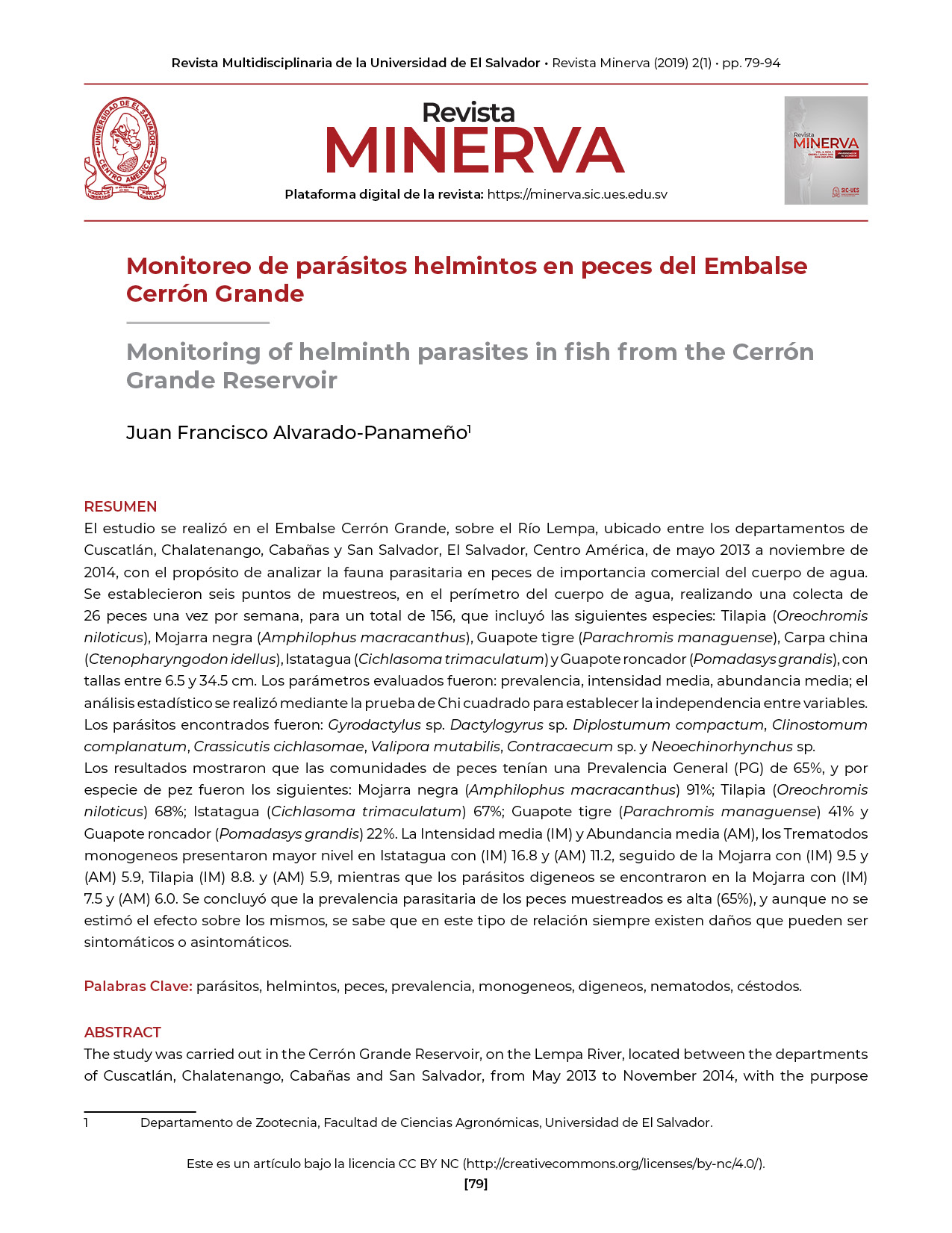Abstract
The study was carried out in the Cerrón Grande Reservoir, on the Lempa River, located between the departments of Cuscatlán, Chalatenango, Cabañas and San Salvador, from May 2013 to November 2014, with the purpose of analyzing the parasitic fauna in commercially important fish of the body of water. Six sampling points were established, on the perimeter of the body of water, making a collection of 26 fish once a week, for a total of 156, which included the following species: Tilapia (Oreochromis niloticus), Black Mojarra (Amphilophus macracanthus), Tiger Guapote (Parachromis managuense), Chinese carp (Ctenopharyngodon idellus), Istatagua (Cichlasoma trimaculatum) and Snoring Guapote (Pomadasys grandis), with sizes between 6.5 and 34.5 cm. The parameters evaluated were: prevalence, average intensity, average abundance; Statistical analysis was performed using the Chi-square test to establish the independence between variables. The parasites found were: Gyrodactylus sp. Dactylogyrus sp. Diplostumum compactum, Clinostomum complanatum, Crassicutis cichlasomae, Valipora mutabilis, Contracaecum sp. and Neoechinorhynchus sp. The results showed that the fish communities had a General Prevalence (PG) of 65%, and by species of fish were the following: Black Mojarra (Amphilophus macracanthus) 91%; Tilapia (Oreochromis niloticus) 68%; Istatagua (Cichlasoma trimaculatum) 67%; Guapote tiger (Parachromis managuense) 41% and Guapote snoring (Pomadasys grandis) 22%. Average Intensity (IM) and Medium Abundance (AM), Monogeneous Trematodes showed a higher level in Istatagua with (IM) 16.8 and (AM) 11.2, followed by Mojarra with (IM) 9.5 and (AM) 5.9, Tilapia (IM) 8.8. and (AM) 5.9, while the digenetic parasites were found in the Mojarra with (IM) 7.5 and (AM) 6.0. It was concluded that the parasitic prevalence of the sampled fish is high (65%), and although the effect on them was not estimated, it is known that in this type of relationship there are always damages that can be symptomatic or asymptomatic.

This work is licensed under a Creative Commons Attribution 4.0 International License.
Copyright (c) 2019 Authors who publish in Revista Minerva agree to the following terms: Authors continue as owners of their work, assigning only dissemination rights to Minerva Magazine under the standards of the Creative Commons Attribution 4.0 International License (CC BY 4.0). This license allows others to mix, adapt and build upon the work for any purpose, including commercially, and although new works must also acknowledge the initial author, they do not have to license derivative works under the same terms.




